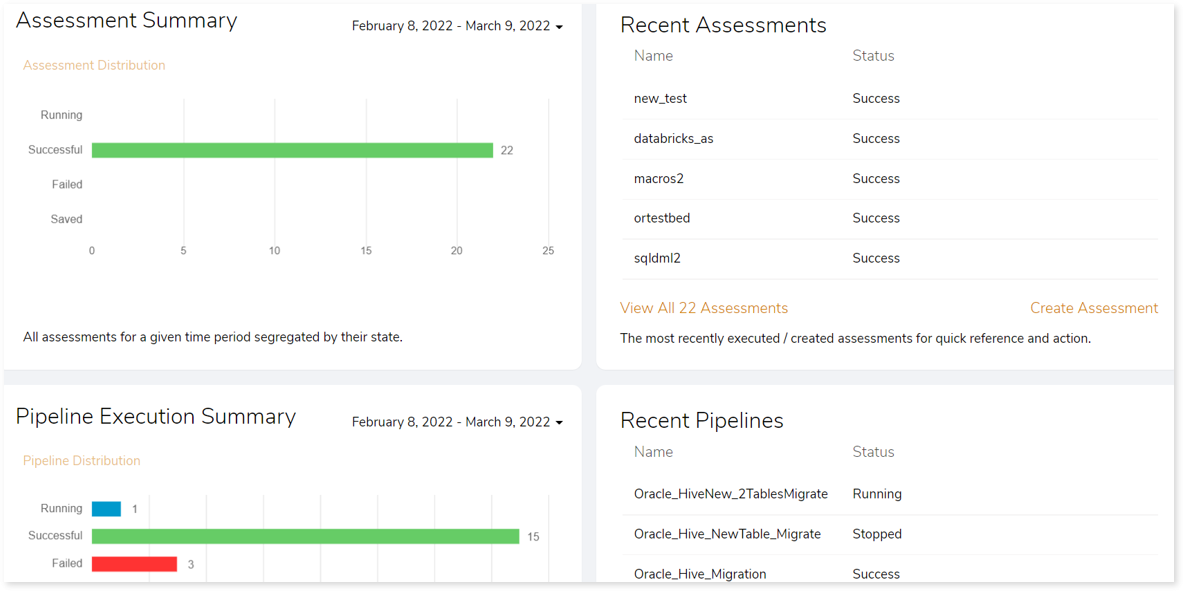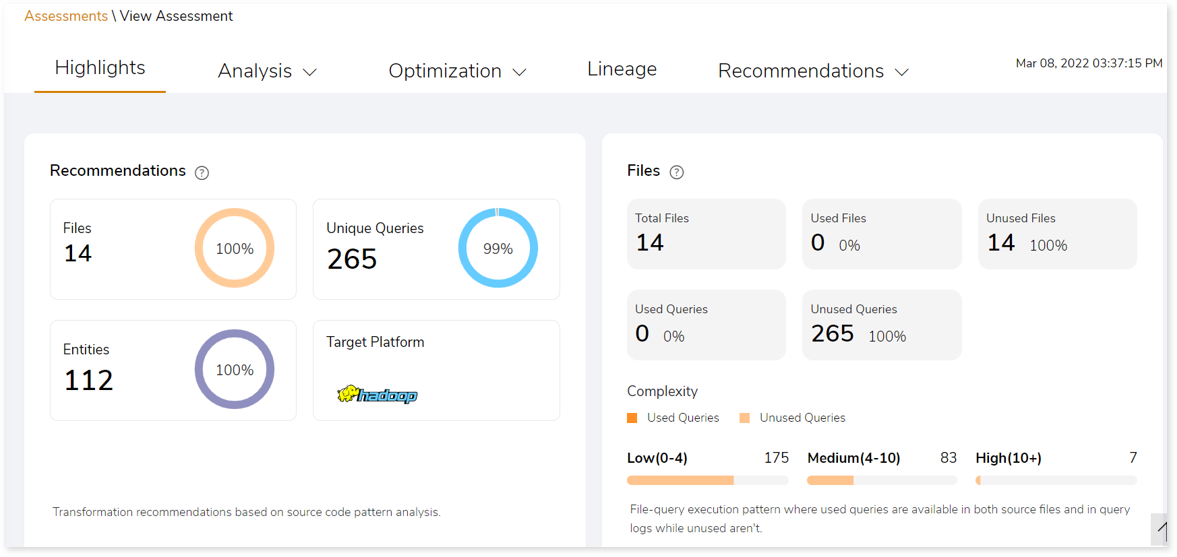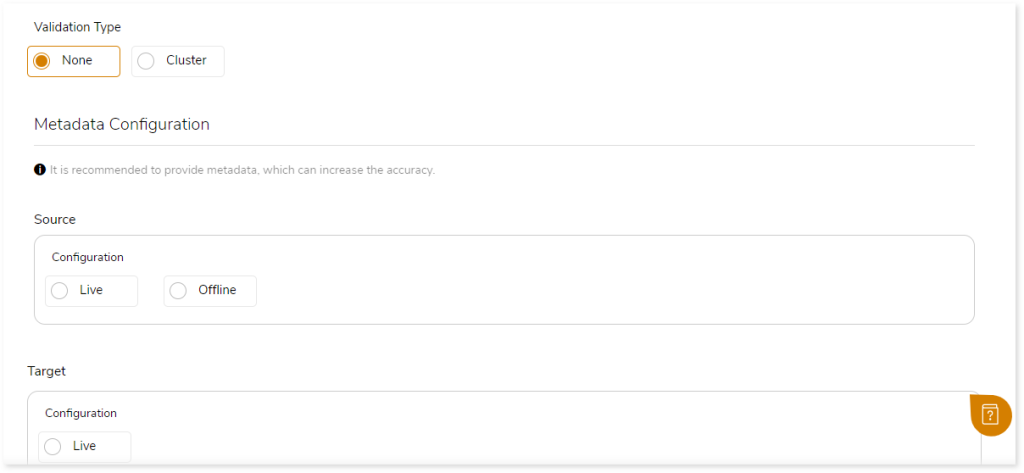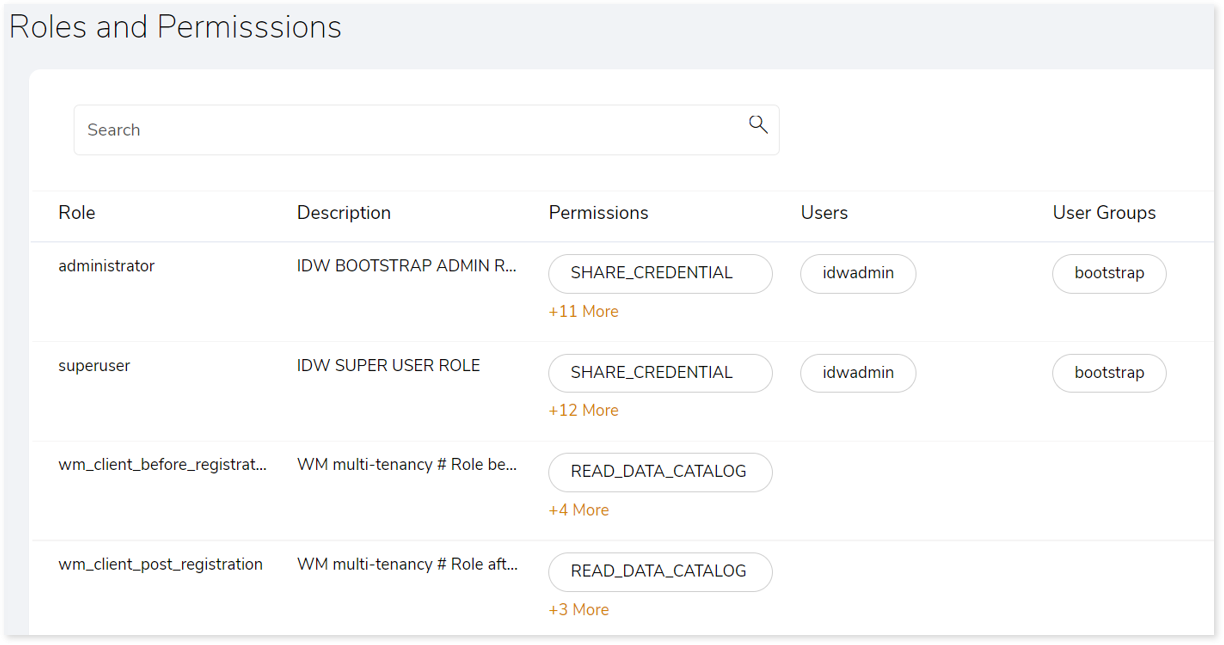Quick Tour of the Web Interface
Once you have logged into the LeapLogic web-based graphical interface, you can assess your existing enterprise inventory (source code), migrate data, transform code and validate it, and execute the transformed code onto the target of your choice.
In addition, if you have the required administrator roles, you can perform administrative tasks such as creating and managing users.
In this Topic:
Dashboard
This page displays a brief view of the existing assessment, pipeline, and notebook summary.

This page contains:
- Assessment Summary: Provides information about all assessments for a given period segregated by their state.
- Recent Assessments: Provides information about the most recently executed or created assessments for quick reference and action.
- Pipeline Execution Summary: Provides information about all pipelines for a given period segregated by their state.
- Recent Pipelines: Provides information about the most recently executed or created pipelines for quick reference and action.
- Notebook Summary: Provides information about all pipelines for a given period.
- Recent Notebooks: Provides information about the most recently executed or created Notebook for quick reference and action.
Assessment
This page shows the highlights of an already available sample assessment.

Tasks you can perform on this page include:
- Highlights the assessment executed such as resource utilization at source, logical workload segregation as per their patterns.
- In-depth analysis for applications, users, queries, entities, ETL workloads, procedures, and functions, and more.
- Identify complex interdependencies between various enterprise workloads through an interactive data and process lineage graph.
- Technical debt in code, schema, etc.
- Actionable recommendations for moving the workloads to the target in a phased manner.
- Comprehensive downloadable reports.
Data Migration with Validation
This page shows information about schema conversion and data migration.

Tasks you can perform on this page include:
- Convert source schema to the target of your choice.
- Migrate data from source to target.
- Get recommendations about schema optimization for the chosen target.
- Transform database views.
- Validate the migrated data.
Logic Transformation (batch or individual) with Code Validation
This page shows information about logic transformation and code validation.

Tasks you can perform on this page include:
- Transform code and business logic e.g., DML scripts, stored procedures, scheduler scripts, analytics scripts, reporting scripts, etc. to the target equivalent of your choice.
- Syntactically validate the transformed code.
- Execute unit testing on transformed queries on auto-generated datasets.
- Execute integration testing on real customer datasets.
- Perform inline edits and optimizations through a lightweight Notebook interface.
Execution on Target
This page shows information about the execution of the transformed code in the target environment.

Tasks you can perform on this page include:
- Execute the transformed code in the chosen target environment.
- Execute independent workloads in parallel.
Operationalization on Target (Go-Live)
This part of the migration lifecycle deals with transitioning into production and going live on the target.
Tasks you can perform in this stage include:
- Achieve the goal of the migration pursuit which is operationalization on target.
- Setup CI/CD processes and pipelines.
- Plan on-demand capacity for optimized price-performance on target.
- Data governance and compliance using a target-native data catalog.
- Powerful operational monitoring.
This page shows information about almost all aspects of the tool. On this page you can find:
- The sample workflow
- Tutorial videos
- How to perform workload transformation
Administration
This page shows information about administrator options.

Tasks you can perform on this page include:
- Create new users and groups.
- Assign roles and permissions to users and groups.